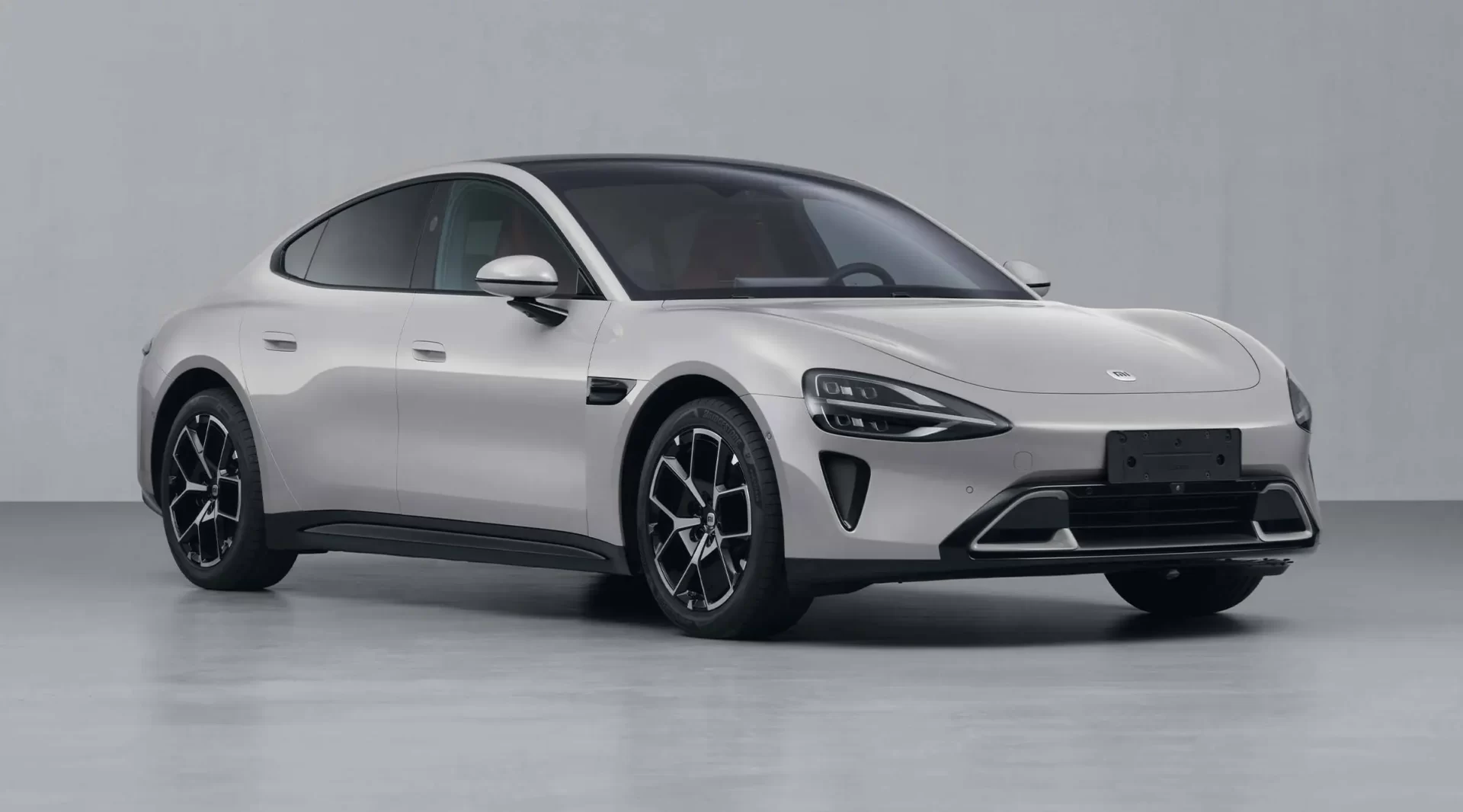Xiaomi‘s first EV model is bigger than the Tesla Model 3 and Nio ET5, and will be available in single and dual motor versions, with battery suppliers BYD and CATL.
The look and key specs of Xiaomi’s much-anticipated first electric vehicle (EV) model have been revealed in a regulatory filing.
China’s Ministry of Industry and Information Technology (MIIT) released the latest batch of models that will soon be allowed to be sold in its catalog today for public comment, and Xiaomi’s first EV model, the SU7, is included.
The public can submit feedback between November 16 and November 22. Entering the catalog is the last major regulatory process by which a model can be allowed to be sold in China.
Xiaomi’s EV has two product models — BJ7000MBEVA1 and BJ7000MBEVR2 — with the former being a dual-motor model and the latter a single-motor model.
The battery electric vehicle (BEV) model is produced by BAIC Off-road Vehicle, the off-road vehicle business division of BAIC Group, not Xiaomi, according to the filing.
The Xiaomi EV measures 4,997 mm in length, 1,963 mm in width and 1,455 mm in height, and has a wheelbase of 3,000 mm. The sedan supports a top speed of 210 kilometers per hour.
That size is larger than both Tesla’s (NASDAQ: TSLA) Model 3 sedan and Nio’s (NYSE: NIO) ET5.
The updated Model 3 currently sold in China measures 4,720 mm in length, 1,848 mm in width and 1,442 mm in height, with a wheelbase of 2,875 mm, while the regular ET5 measures 4,790 mm in length, 1,960 mm in width and 1,499 mm in height, with a wheelbase of 2,888 mm.
The rear badge indicates that it comes in a single-motor version called the SU7, which weighs 1,980 kg, and dual-motor versions including the SU7 Pro and SU7 Max, which both weigh 2,205 kg.

The single-motor Xiaomi SU7 is powered by an electric motor with a peak power of 220 kW from United Automotive Electronic Systems, Bosch’s joint venture in China with Zhonglian Automotive Electronics.
The Xiaomi SU7 Pro and Max versions are powered by dual motors with peak power of 220 kW and 275 kW, respectively, from China-based Suzhou Inovance Automotive.
The Xiaomi SU7 is powered by lithium iron phosphate (LFP) batteries, with the cell supplier being an affiliate of BYD’s battery division FinDreams in Xiangyang, Hubei province.
The Xiaomi SU7 Pro and SU7 Max are powered by Li-ion ternary batteries supplied by CATL.
The Xiaomi SU7 supports optional LiDAR, a component placed on the roof, similar to Nio’s NT 2.0-based models.
Its Pro and Max versions come standard with an active rear wing.
Xiaomi officially announced on March 30, 2021 that it was joining the car-making bandwagon, stating that it was making an initial investment of RMB 10 billion yuan ($1.38 billion) in its automotive business, with a projected investment of $10 billion over the next 10 years.
Xiaomi has made few announcements about the progress of its car-making efforts over the past two years, with its executives’ only few mentions repeating that the company’s first EV model will be launched in 2024.
Earlier today, local media outlet National Business Daily cited a person familiar with the matter as saying that Xiaomi’s first EV model will begin mass production in December and will be officially launched in February next year.
Xiaomi’s first EV model is expected to go on sale in 2024, with shipments estimated at 50,000 to 60,000 units, Ming-Chi Kuo, an analyst at TF International Securities, a well-known tracker of Apple’s supply chain, said in an October 13 post on Medium.
The model, whose key selling points are autonomous driving, software ecosystem, 800 V fast charging and powertrain specifications, is estimated to sell for less than RMB 300,000, Kuo said.
If the price is closer to RMB 250,000 or lower, there should be room for upward revision in shipments, Kuo said.
This article was first published by Phate Zhang on CnEVPost, a website focusing on new energy vehicle news from China.

